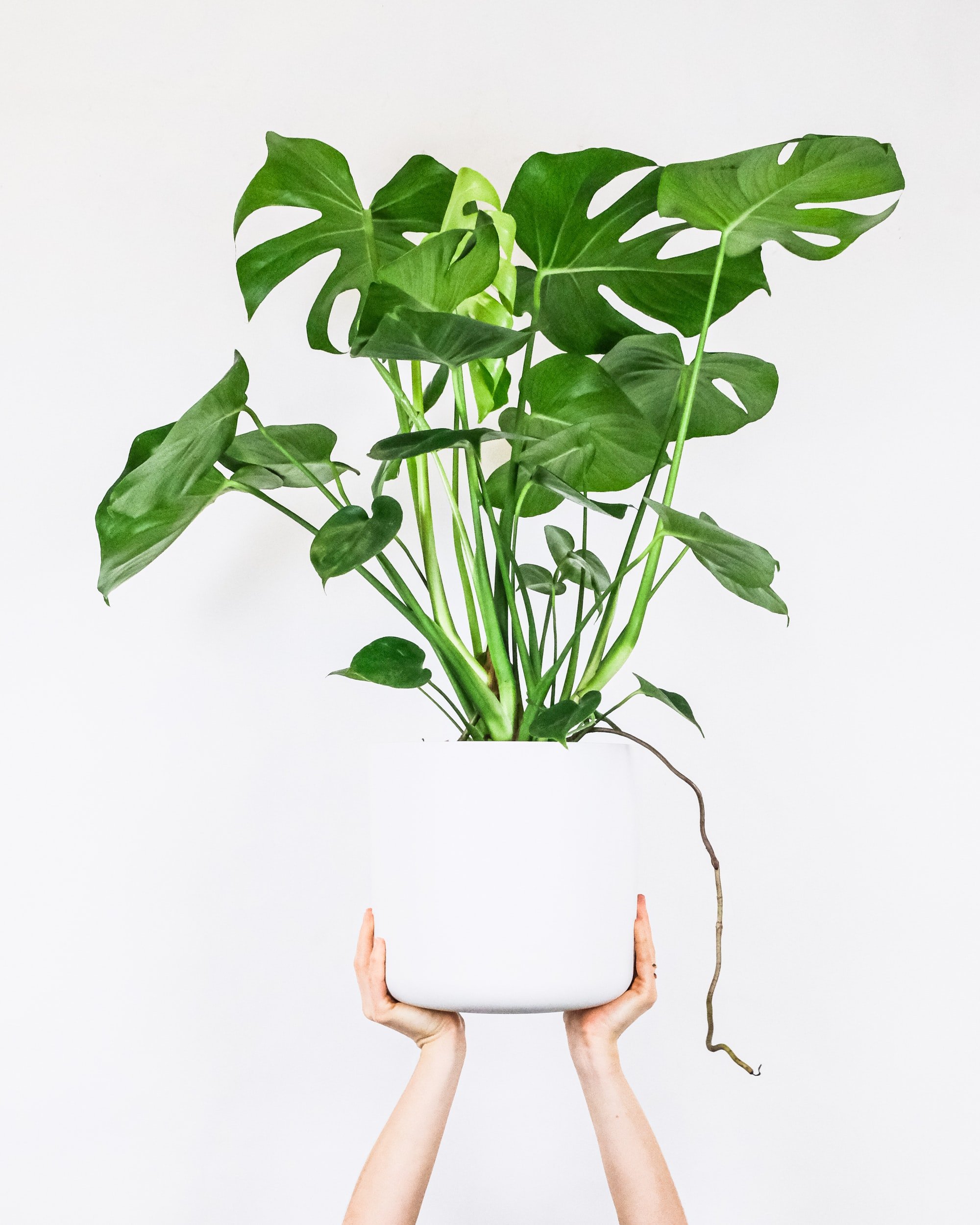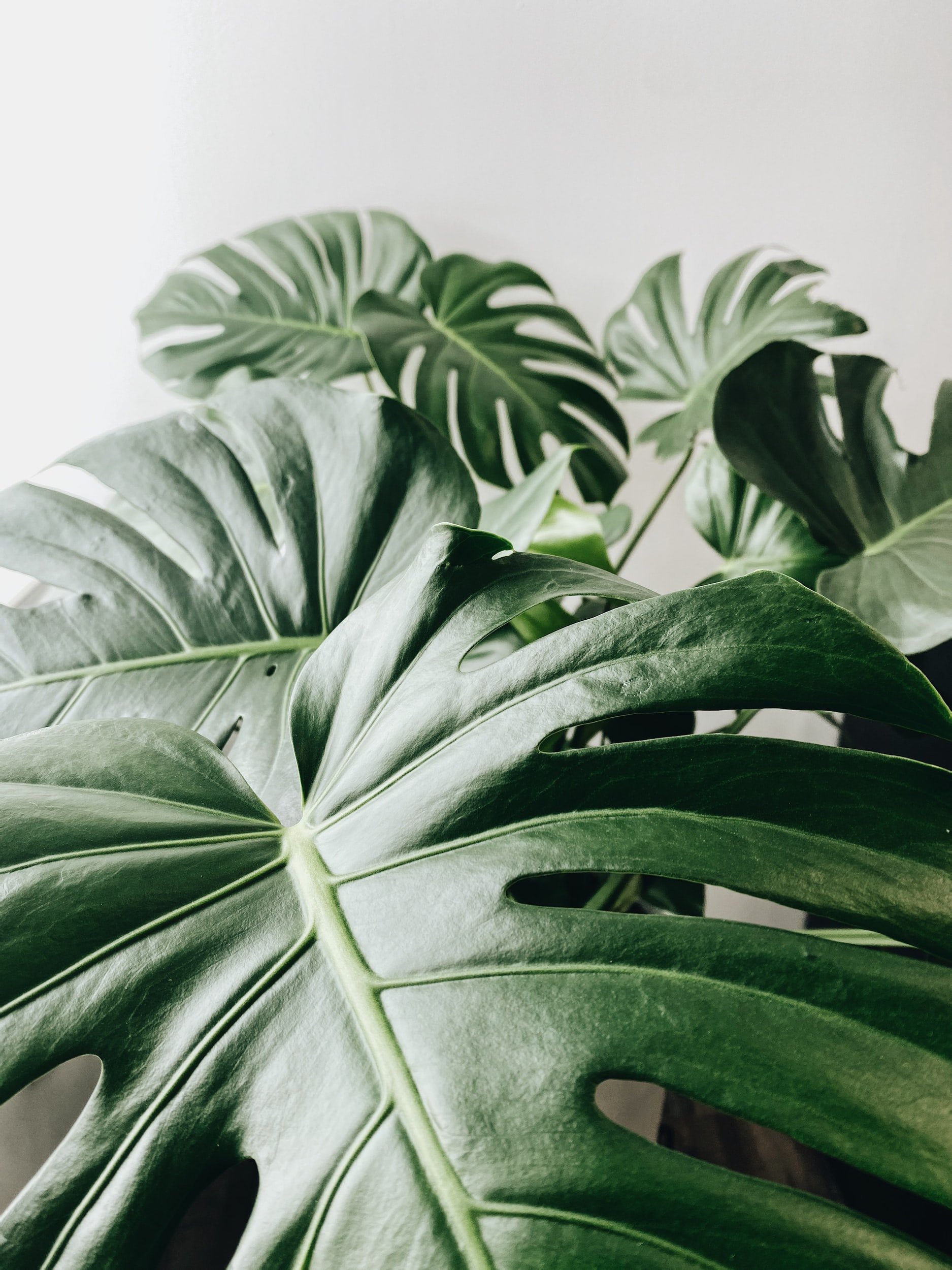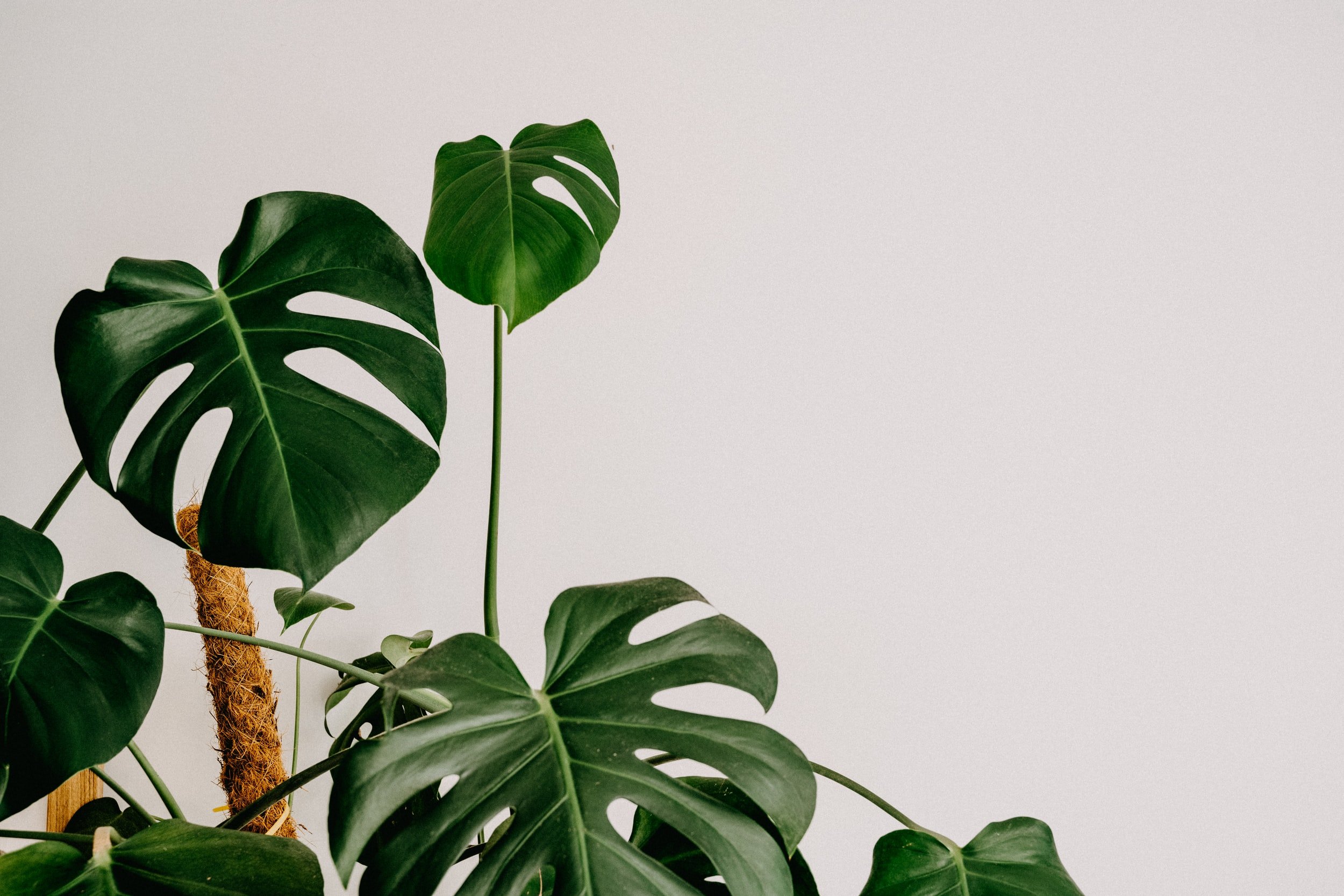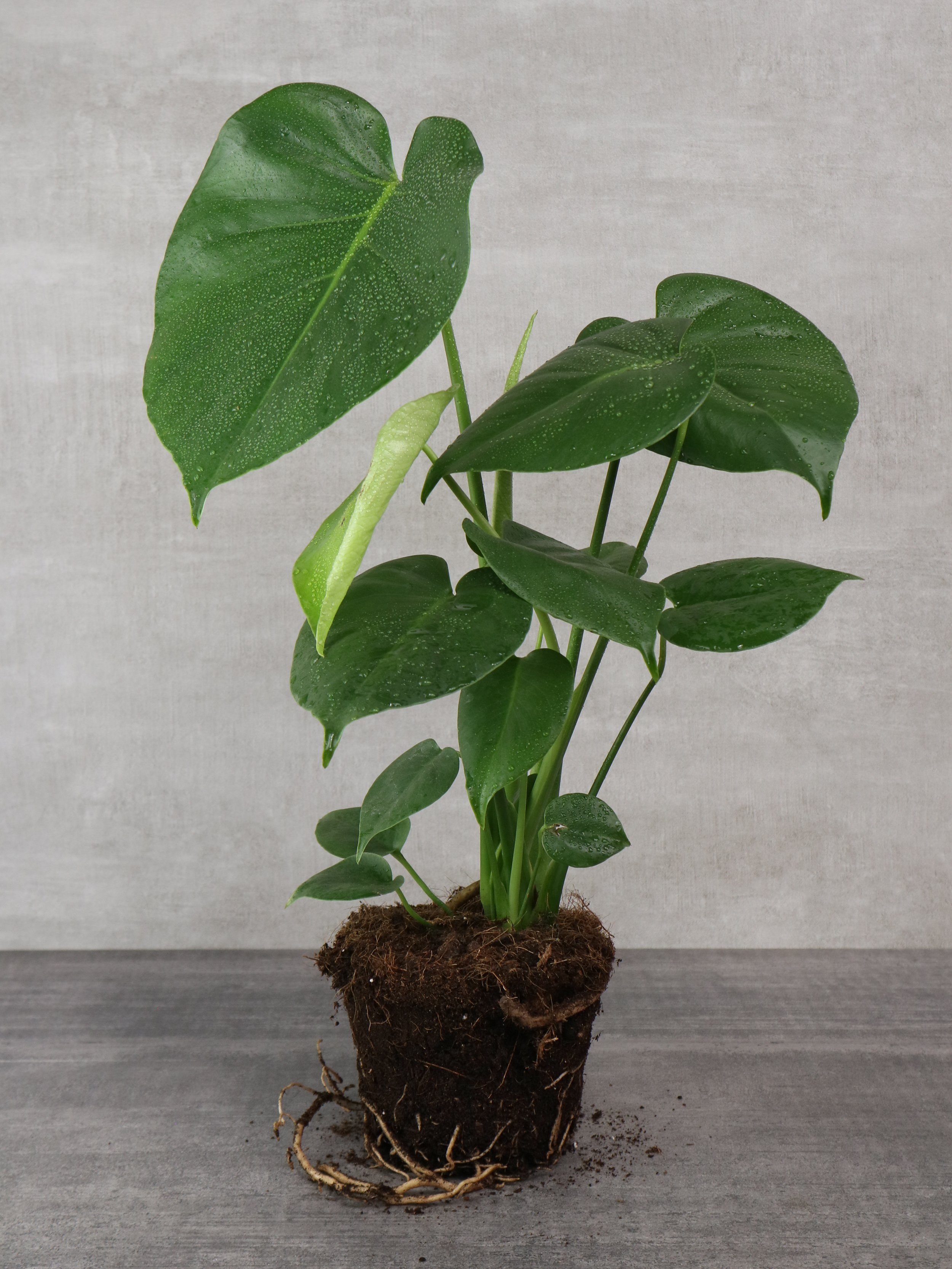Plant Profile
Monstera Deliciosa
a.k.a. Swiss cheese Plant // Mexican Breadfruit // Hurricane Plant
Originating from Central America, the Monstera Deliciosa really is a statement piece that will love all your attention and will reward you with magnificent growth when given the right conditions. In the wild it can grow up to 20m tall and produces both flowers and fruit! Mature plants will have more leaves featuring the distinctive ‘holes’ (fenestrations).
Top Tips
✔ Keep leaves free from dust to allow for more efficient photosynthesis.
✔ Aerate the soil once a week so the roots don’t suffocate - you can do this by using a chopstick to loosen the soil around the base.
✔ It is likely your monstera will grow aerial roots - these can be left as they are or removed depending on your personal preference - the latter will not harm your plant.
Plant Care
-
Monstera’s grow best in bright, indirect light and won’t mind some dappled sunlight on its leaves. Direct sunlight will scorch the leaves and although it can survive lower light conditions it is unlikely to grow much.
-
Water when the top two inches of soil have dried out before watering again. It is important for the monstera to have good drainage via the pot and soil - a sand or perlite soil mix will be perfect.
-
This plant LOVES it hot and humid. It will be happiest when given a regular misting - if it is in a particularly dry environment this is recommended every day. Placing the plant on a layer of stones in water can help keep humidity levels up if you aren’t able to commit to a daily mist!
-
A Monthly feeding throughout Spring and Summer should suffice. However, fertilising twice a month upon visible signs of new growth can be beneficial. A new top soil can be beneficial for nutrients if you are going into autumn/winter without repotting.
-
Ideal temperatures for optimum growth are between 18-27°C. Lower than this will slow plant development. When your plant is growing well, it may need some extra support with a moss pole or bamboo stake.
-
Toxic to humans and pets if ingested - be sure to keep away from small children and pets.
-
Leaves can be easily propagated in water from stem cuttings. Always cut just below a node of the stem.
-
Repotting is recommended once every year during Spring.





Quick Plant check up
Yellow leaves
Usually indicates overwatering.
Brown leaves
Can be a sign of low humidity.
Droopy leaves
Plant is dehydrated or root bound.



